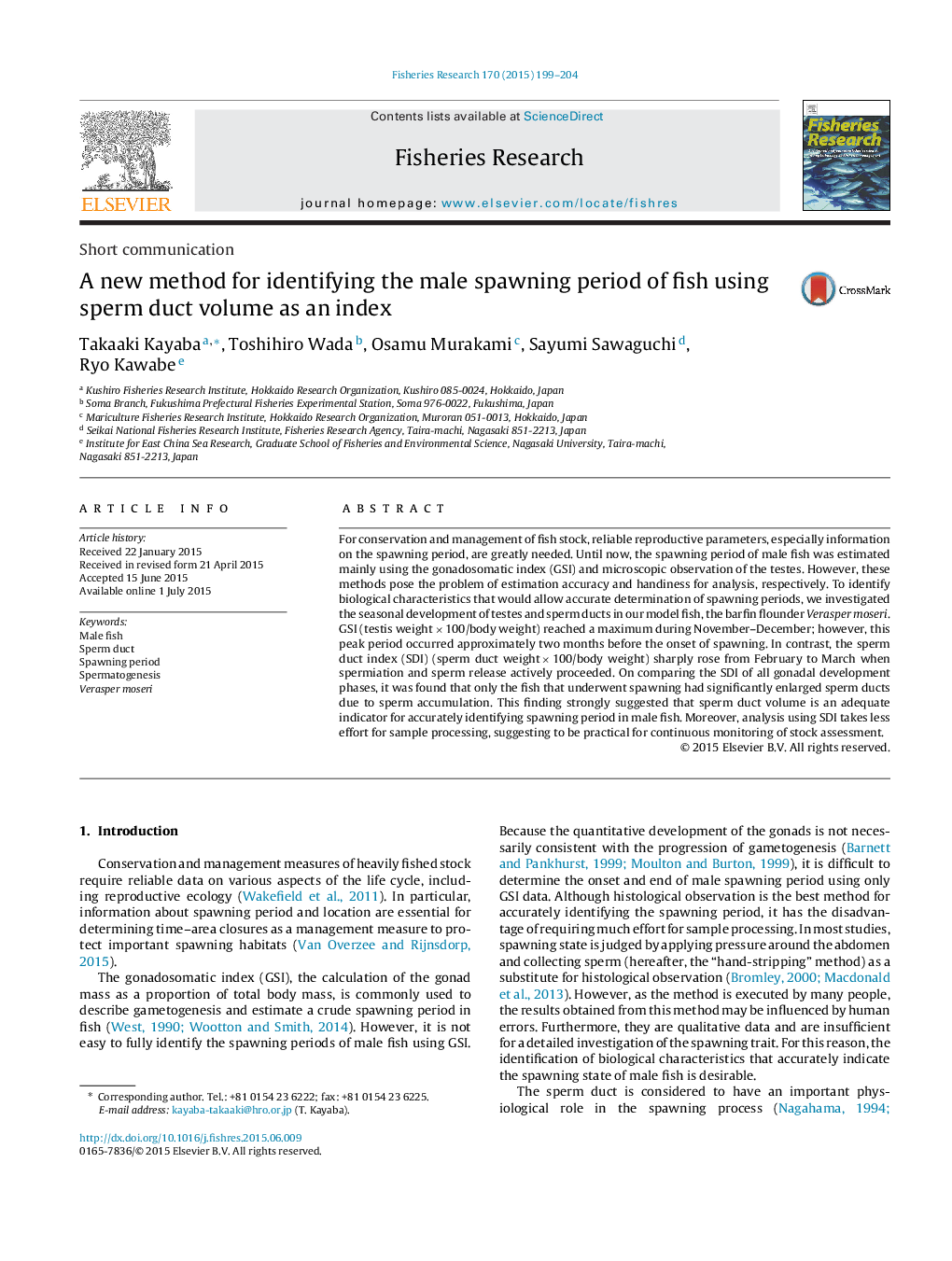| Article ID | Journal | Published Year | Pages | File Type |
|---|---|---|---|---|
| 6385518 | Fisheries Research | 2015 | 6 Pages |
Abstract
For conservation and management of fish stock, reliable reproductive parameters, especially information on the spawning period, are greatly needed. Until now, the spawning period of male fish was estimated mainly using the gonadosomatic index (GSI) and microscopic observation of the testes. However, these methods pose the problem of estimation accuracy and handiness for analysis, respectively. To identify biological characteristics that would allow accurate determination of spawning periods, we investigated the seasonal development of testes and sperm ducts in our model fish, the barfin flounder Verasper moseri. GSI (testis weight Ã 100/body weight) reached a maximum during November-December; however, this peak period occurred approximately two months before the onset of spawning. In contrast, the sperm duct index (SDI) (sperm duct weight Ã 100/body weight) sharply rose from February to March when spermiation and sperm release actively proceeded. On comparing the SDI of all gonadal development phases, it was found that only the fish that underwent spawning had significantly enlarged sperm ducts due to sperm accumulation. This finding strongly suggested that sperm duct volume is an adequate indicator for accurately identifying spawning period in male fish. Moreover, analysis using SDI takes less effort for sample processing, suggesting to be practical for continuous monitoring of stock assessment.
Related Topics
Life Sciences
Agricultural and Biological Sciences
Aquatic Science
Authors
Takaaki Kayaba, Toshihiro Wada, Osamu Murakami, Sayumi Sawaguchi, Ryo Kawabe,
